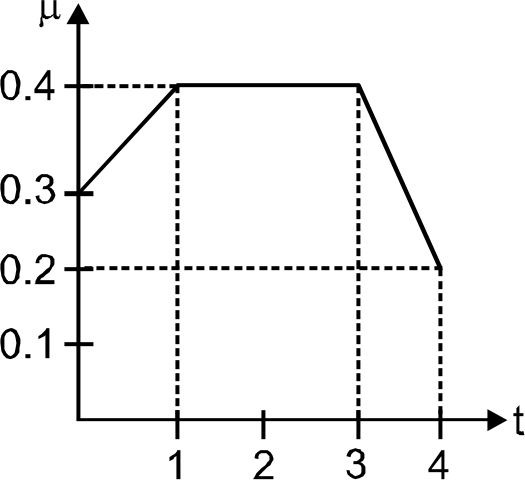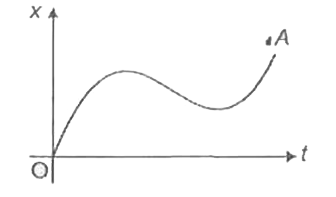___________are saprophytic protists, whose body moves along decaying twigs and leaves engulfing organic material.
Euglenoids
Dinoflagellates
Chrysophytes
Slime moulds
The correct Answer is:D
Step-by-Step Solution:
1. Understanding the Question: The question asks for a type of saprophytic protist that moves along decaying organic matter like twigs and leaves while engulfing it.
2. Identifying the Options: The options provided are:
- Euglenoids
- Dinoflagellates
- Chrysophytes
- Slime molds
3. Analyzing Each Option:
- Euglenoids: These are flagellated, single-celled organisms that are primarily photosynthetic and do not fit the description of saprophytic behavior.
- Dinoflagellates: These are also single-celled organisms that have two flagella and are mostly found in marine environments. They are not saprophytic.
- Chrysophytes: Known as golden algae, they are primarily photosynthetic and do not exhibit saprophytic behavior.
- Slime molds: These are indeed saprophytic protists. They have a multi-nucleated body that moves along decaying organic matter, such as twigs and leaves, and they engulf organic material.
4. Conclusion: Based on the analysis, the correct answer is slime molds.
Final Answer: Slime molds are saprophytic protists whose body moves along decaying twigs and leaves engulfing organic material.
---
- Euglenoids
- Dinoflagellates
- Chrysophytes
- Slime molds
- Euglenoids: These are flagellated, single-celled organisms that are primarily photosynthetic and do not fit the description of saprophytic behavior.
- Dinoflagellates: These are also single-celled organisms that have two flagella and are mostly found in marine environments. They are not saprophytic.
- Chrysophytes: Known as golden algae, they are primarily photosynthetic and do not exhibit saprophytic behavior.
- Slime molds: These are indeed saprophytic protists. They have a multi-nucleated body that moves along decaying organic matter, such as twigs and leaves, and they engulf organic material.
Topper's Solved these Questions
- BIOLOGICAL CLASSIFICATIONBOOK - AAKASH INSTITUTE ENGLISHCHAPTER - BIOLOGICAL CLASSIFICATIONEXERCISE - Assignment (Section - B) (Objective Type Questions)
35 Videos
- BIOLOGICAL CLASSIFICATIONBOOK - AAKASH INSTITUTE ENGLISHCHAPTER - BIOLOGICAL CLASSIFICATIONEXERCISE - Assignment (Section - C) (Previous Years Questions)
128 Videos
- BIOLOGICAL CLASSIFICATIONBOOK - AAKASH INSTITUTE ENGLISHCHAPTER - BIOLOGICAL CLASSIFICATIONEXERCISE - Exercise
50 Videos
- BIODIVERSITY AND CONSERVATIONBOOK - AAKASH INSTITUTE ENGLISHCHAPTER - BIODIVERSITY AND CONSERVATIONEXERCISE - SECTION - D (Assertion-Reason Type Questions)
10 Videos
- BIOMOLECULESBOOK - AAKASH INSTITUTE ENGLISHCHAPTER - BIOMOLECULESEXERCISE - ASSIGNMENT (SECTION-D) Assertion-Reason Type Questions
10 Videos
Similar Questions
Read the following paragraph about an organism .
These organisms are unicellular eukaryotes . Their body moves
along decaying twigs and leaves engulfing organic material . Under suitable conditions, they from an aggregation called plasmodium
which may grow and spread over several feet . During unfavorable conditions, the plasmodium differentiates and forms fruiting bodies bearing spores at their tips
Which of the following organism does it ?
View SolutionWhen a body moves with a constant speed along a circle
View SolutionWhich of the following graph for a body moving along a straight line is possible ?
View SolutionProtists are 1. _____________ (prokaryotic/eukaryotic) containing a well-defined nucleus in their cells. While 2. _________________ (Euglena/Amoeba) moves with the help of pseudopodia, Paramoecium has hair-like structures all over its body called 3. __________________ (cilia/flagella). Entamoeba is a 4. __________ (saprophytic/parasitic) protist causing amoebiasis. 5. __________ (Chlamydomonas/Euglena) is a unique protist, which is both autotrophic and heterotrophic.
View SolutionIf v is the velocity of a body moving along x-axis, then acceleration of body is
View SolutionA small body is projected with a velocity of 20.5ms−1 along rough horizontal surface. The coefficient of friction (μ) between the body and surface changes with time t (in s) as the the body moves along the surface. Find the velocity at the end of 4s in m/s

View SolutionTwo coherent sources S1 and S2 area separated by a distance four times the wavelength λ of the source. The sources lie along y axis whereas a detector moves along +x axis. Leaving the origin and far off points the number of points where maxima are observed is
View SolutionThe position - time graph for a body moving along a straight line between O and A is shown in figure. During its motion between O and A, how many time body comes to rest?

View SolutionPlants need carbon dioxide and (i) ________, the raw materials for photosynthesis to occur. The (ii) ___________ is trapped by chlorophyll for converting the raw materials into chemical energy of food. (iii) ___________ are oval shaped organelles found in the leaf cells. They contain the chlorophyll pigments. The food prepared by plants is carried by (iv) __________ to organs like roots, stems and leaves for its (v) ________.
View SolutionNaked (wall-less) , multinucleated and saprophytic organisms are grouped as ………….
(a) monerans
(b) Protists
(c) euglenoids
(d) slime moulds
View Solution